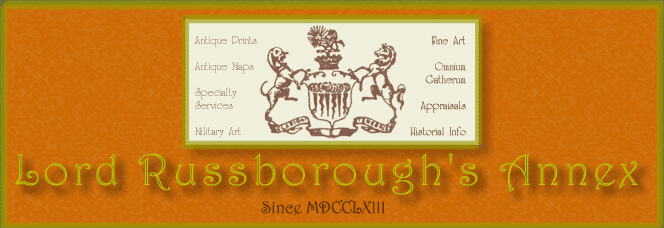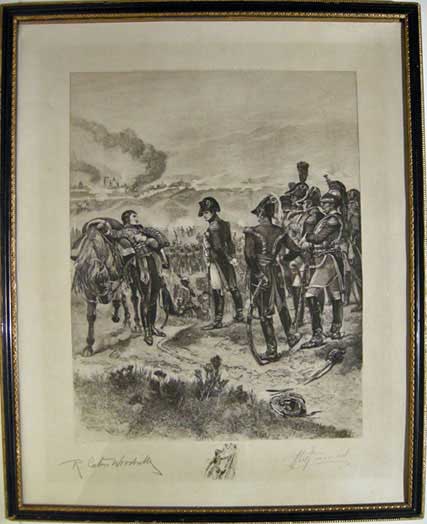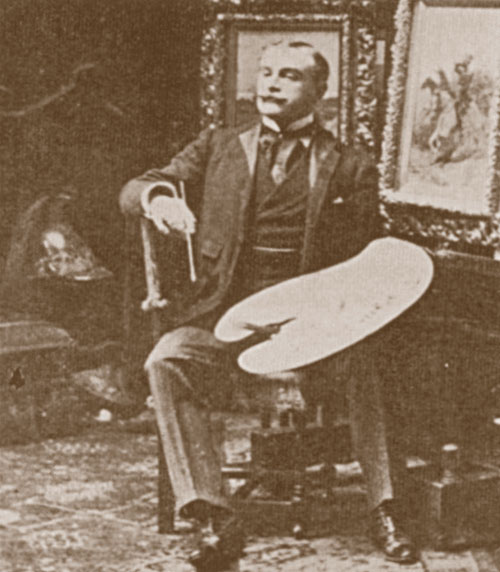Richard Caton Woodville Jr (1856-1926)
It was Woodville's attention to detail in producing countless oil paintings and drawings that gained him wide attention and popularity. He was arguably the most prolific 'battle' artist of the nineteenth and early twentieth century in Britain. He also illustrated many scenes of a journalistic nature, for the Illustrated London News.
Woodville was English by birth and noble descent. His great-grandfather on his mother's side was Charles Carroll of Carrolton-one of the signatories of the Declaration of Independence. His father was also a war painter and his mother was extremely talented in portraiture. His father died before he was born. This heritage helped him to launch his career as a painter. He grew up in St Petersburg during a time of turmoil but later removed to Paris then finally settled in London in 1875, where he began working for the Illustrated London News. As was the case with several history painters of the Victorian period, he studied at Dusseldorf sometime with Wilhelm Kamphaussen (Camphausen), the great German military painter and Court Painter for William I - to whom he was drawn whilst under the tuition of E. Von Gebbardt - A religious painter. He later studied in Paris.
As a war artist for the I.L.N., he experienced first-hand the Balkan war in Albania and Montenegro towards the end of the Russo-Turkish War in 1877, and later in Egypt during the war of 1882. He collected various firearms and weapons on these excursions, which he kept for visual reference in his studio. During the latter conflict, he made numerous sketches and obtained photographs of the trenches at Tel-e-Kebir for his friend, the French military artist, Alphonse de Neuville who had been commissioned to paint a scene of the battle. The fruits of both their labours were shown at the Fine Art Society in 1883.
He painted in oils more often in the 1880's and began working only in colour in 1897 this was perhaps due to the fact that he surrounded himself with bright, vibrant colours in his studio in Queen's Gate, London. His work was always completed to a high standard and was extremely accurate although somewhat glamorous. In this he was compared with Meissonnier - another war painter who worked for The Illustrated London News.
His first Royal Academy picture exhibited in 1879, was entitled Before Leuthen, Dec. 3rd, 1757. Thereafter, he was a frequent exhibitor at Burlington House, showing no less than 21 battle pictures, many dealing with contemporary events such as the Second Afghan War, Candahar (Private collection) and Maiwand; Saving the Guns (Walker Art Gallery, Liverpool), the Zulu War - Prince Louis Napoleon in Zululand, and the Boer War - Lindley; Whitsunday 1900 (Oxfordshire Light Infantry Association), and Dawn of Majuba (Canadian Military Institute). He painted many historical recreations both in oil and water-colour including a series on famous British battles for the Illustrated London News. He depicted The Charge of the Light Brigade (Royal Collection, Madrid) and The Charge of the 21st Lancers at Omdurman (Walker Art Gallery, Liverpool), Blenheim, Badajos and several Waterloo pictures.
During the Great War, he turned his talents to depicting the current events, three of which were exhibited at the Royal Academy. The 2nd. Batt. Manchester Regiment taking six guns at dawn near St. Quentin (The King's Regiment), Entry of the 5th. Lancers into Mons (16th /5th Royal Lancers), and Halloween, 1914: Stand of the London Scottish on Messines Ridge (London Scottish Museum Trust) exhibited in the year of his death.
R. Caton Woodville's work was primarily completed from memory due to the fact that his subjects were generally involved in quick action. Despite this, however, he was accurate to the last detail - no buttons or straps were missing in his paintings. He was particularly talented at describing horses in action although the people in his paintings are also expressive but not to the same degree. His paintings are a pictorial history of the soldiers of the British Empire. During his life, he was the most popular artist of the genre and he was the subject of several articles in magazines and journals. He himself wrote some memoirs in 1914 entitled Random Recollections. He was deeply interested in the army and joined the Royal Berkshire Yeomanry Cavalry in 1879, staying with them until 1914 when he joined the National Reserve as a Captain.




